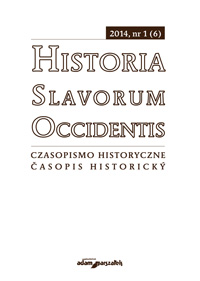Křesťanství mezi Velkou Moravou a Uherskem.
Christianity between Great Moravia and the Hungarian Kongdom.
Questions of Continuity and Discontinuity
Author(s): Ján SteinhübelContributor(s): Agnieszka Tokarczuk (Translator)
Subject(s): Christian Theology and Religion, History, Middle Ages, Theology and Religion, 6th to 12th Centuries
Published by: Wydawnictwo Adam Marszałek
Keywords: Great Moravia;Kingdom of Hungary;Middle Ages
Summary/Abstract: A Transylvanian Prince Gyula I made a visit to Constantinople in 953, where he was baptised. The Patriarch of Constantinople ordained a monk Hierotheus the Hungarian as a bishop, who later baptised the family of Gyula. He also initiated the process of christianising his principality. Gyula’s daughter Sarolt married the Hungarian Prince Géza. Sarolt was very vigorous and she had a strong influence upon her husband. It was her who convinced Géza to invite Christian missionaries to Hungary in 972. She also established the first Hungarian bishopric in her residence of Veszprém. This bishopric was consecrated to the Archangel Michael, to whom also the church in the residence of her father in Alba Iulia (Gyulafehérvár) was dedicated, later rebuilt and honoured with the title of the episcopal cathedral. Michael was not the only patron saint to protect Veszprém. There was also a rotunda of Saint George, considered a very old one at the time. Sarolt wanted to consecrate some church to Saint Michael in Veszprém, because she used to pray to him in Alba Iulia. That was the reason the bishopric of Veszprém did not accept the older dedication to Saint George. The cult of Saint George was very common in Bavaria during the nineth century, yet we have no evidence of Saint George veneration on the territory of Bavarian border marks – and for the same reason there is no evidence of it among the dedications of Pribina’s and Kocel’s churches in Pannonia. The rotunda in Veszprém was definitely not erected in Carolingian times and its dedication was not of Bavarian origin. Therefore, we can assume that is of Great Moravian origin. Another member of the Arpád dynasty was given a name Severin (Hungarian: Szörény) at his baptism in 972, but an old-Hungarian chronicler wrote down his name in the distorted form ‘Zyrind‘. Severin was the Duke of Szomogy, just as his son and successor, i.e., Koppány. Karolda, Sarolt’s older sister is believed to have been his wife. The Hungarian Prince Géza had younger brother Michael. The name Michael, which he took at his baptism in 972, was very popular in Bulgaria already in 866, when Bulgarian Prince Boris took this name at his baptism. If Michael took a Christian name popular in Bulgaria, he could have fulfi lled a wish of his Christian wife of probably Bulgarian origin, further indicated by her sons’ names, i.e., Ladislav and Vazul, which are derivations from the names Vladislav and Vasilij. Michael’s Bulgarian wife, as well as Géza’s Sarolt and Zyrind’s Karold, were Christians from their childhood and they persuaded their pagan husbands to accept Christian baptism. Members of the Arpadian state, who received their baptisms in 972, could be influenced by the impact of Great Moravian and Carolingian Christianity, which partially outlasted in the old pre-Hungarian centres, for example in Nitra, Bratislava, Blatnohrad, Veszprém and Pécs.
Journal: Historia Slavorum Occidentis
- Issue Year: 2014
- Issue No: 1
- Page Range: 42-60
- Page Count: 20
- Language: Slovak

